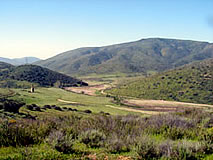San Diego TransNet program releases more funds for wildlife
EHL worked with the San Diego Association of Governments (SANDAG) and other stakeholders to make available $20 million in much needed funds to acquire wildlife habitat.

The 2002 TransNet ballot measure linked a transportation sales tax increase to robust mitigation for highway projects’ impacts to the environment. As of September 2012, this “Environmental Mitigation Program” had acquired more than 3,300 acres of habitat around the San Diego region at a cost of about $100 million. Among the important stretches of wildlife habitat protected are Lilac Ranch in Valley Center, Hidden Valley near Jamul, Sage Hill near Rancho Santa Fe, and Jeffries Ranch near Oceanside and the San Luis Ray River.
Part of the total $800 million TransNet habitat package is an “Economic Benefit” component, which reflects the time and cost savings that can be obtained via a proactive approach to mitigation. It was from this component that the just-released $20 million originated. The Economic Benefit funds are particularly valuable as they are the most flexible part of TransNet program and can be spent most freely to benefit species and ecosystems. SANDAG has been an excellent partner, and with their support we expect projects to be selected and these new funds to be expended by early 2015.
In addition, the program has filled critical gaps in management and monitoring. TransNet has developed best practices for preserve management and conducted scientific research, such as on how well our ecosystems are recovering post-fire and on the rare Thorne’s hairstreak and Hermes copper butterflies. A variety of on-the-ground projects have restored fire-damaged habitat, installed steel barriers to protect vernal pools from off-road vehicles, mapped rare cactus patches used by the California cactus wren, and removed exotic weeds from endangered species habitat.
With state and federal funding sources becoming increasingly scarce, the TransNet program appears ever more prescient.


